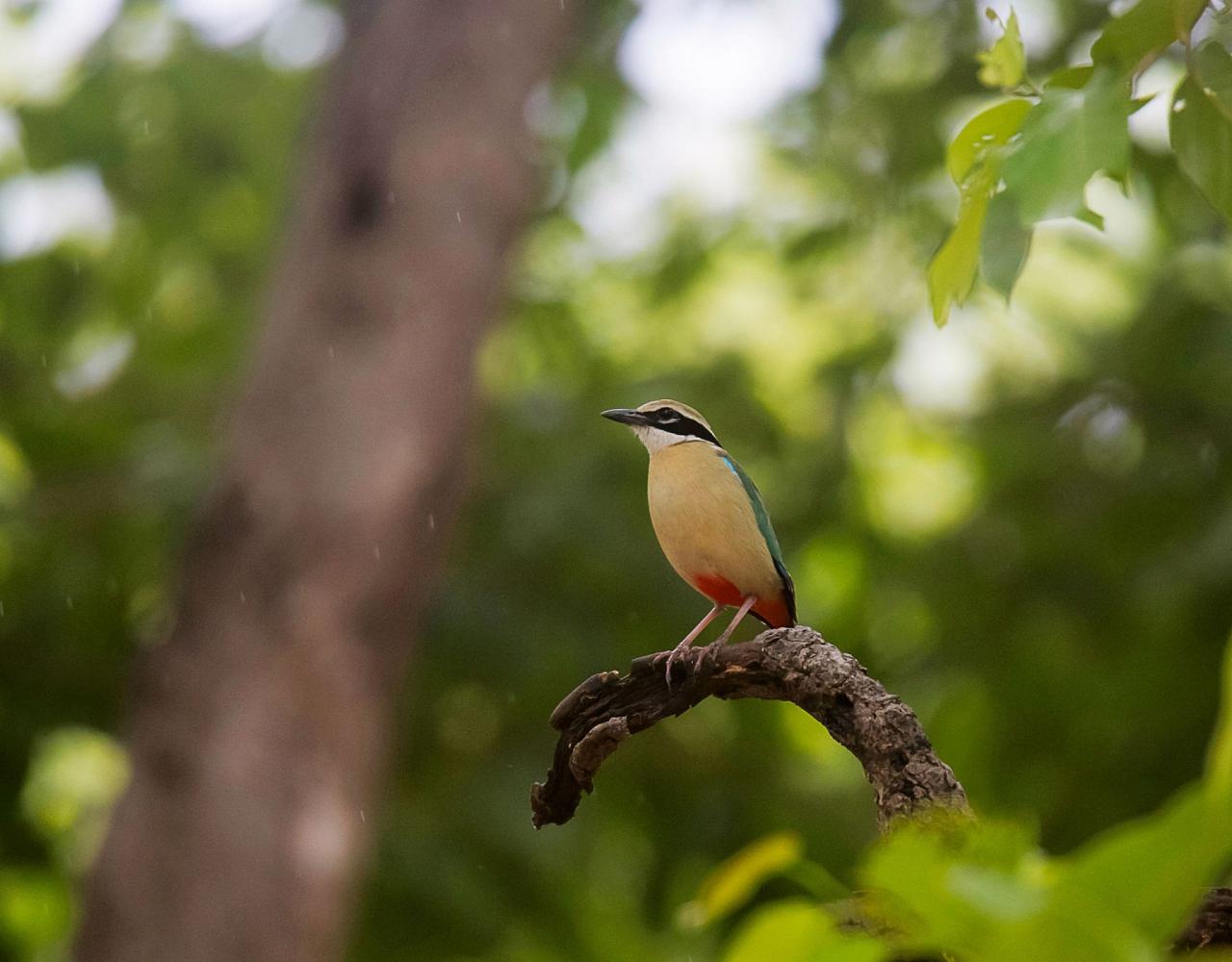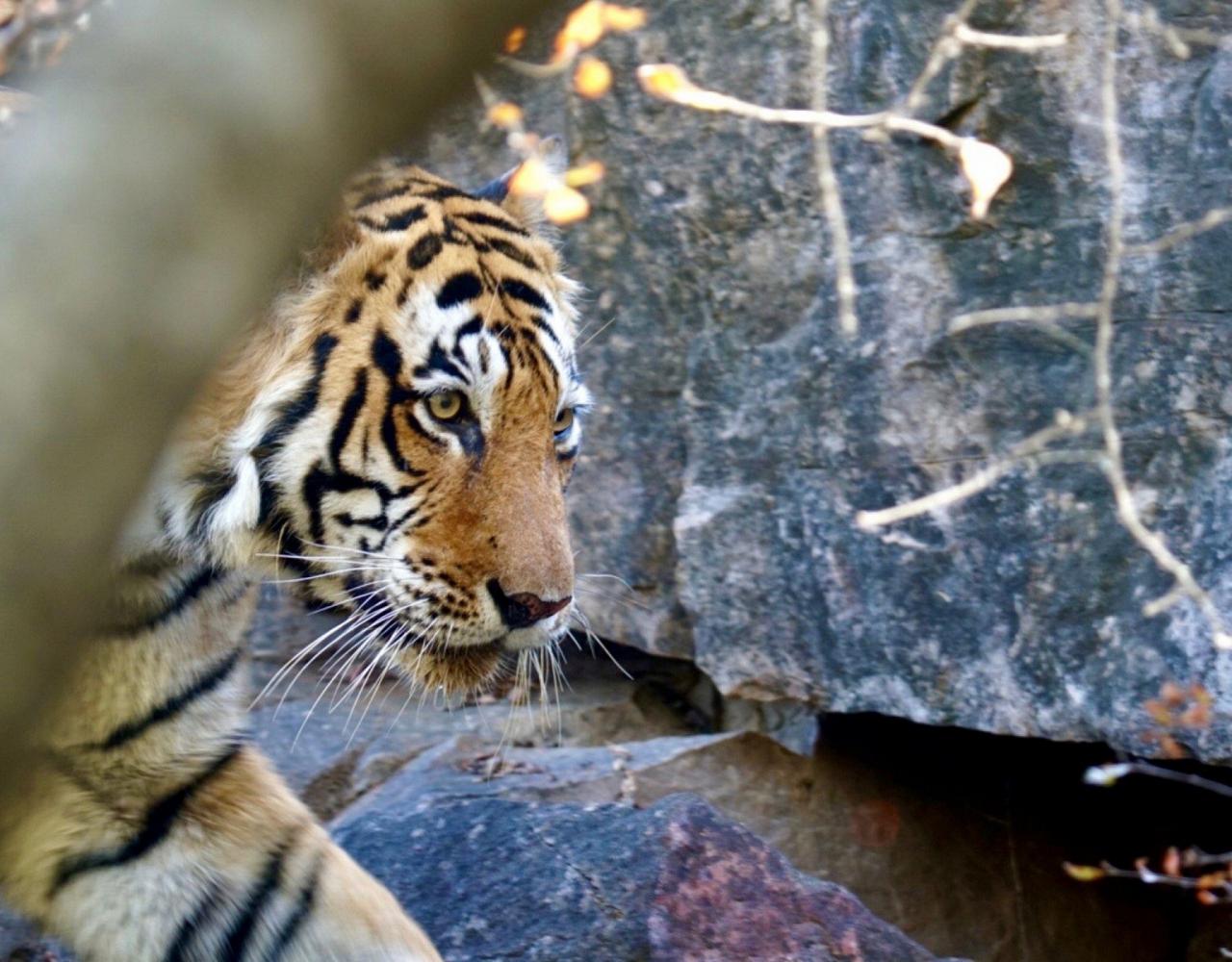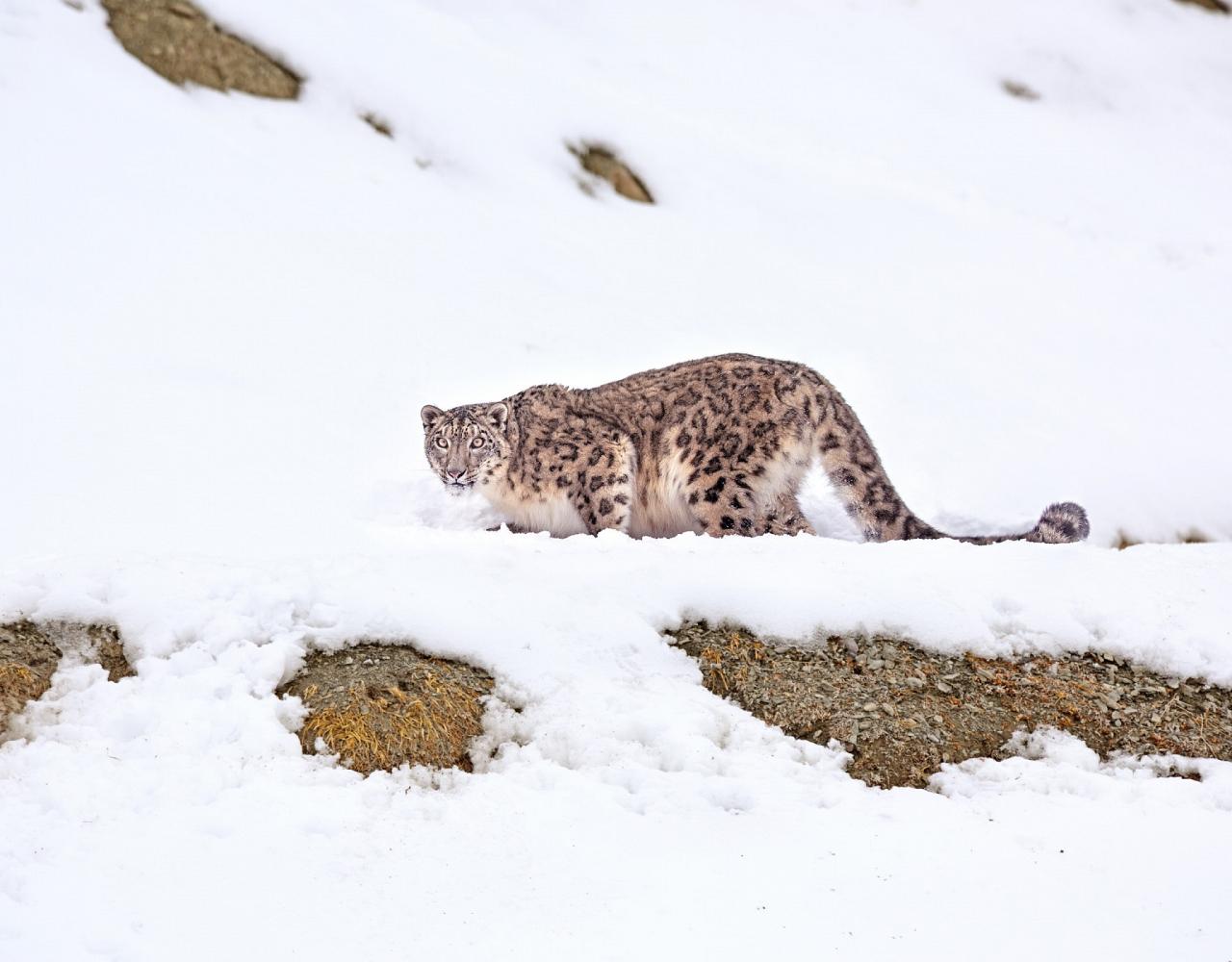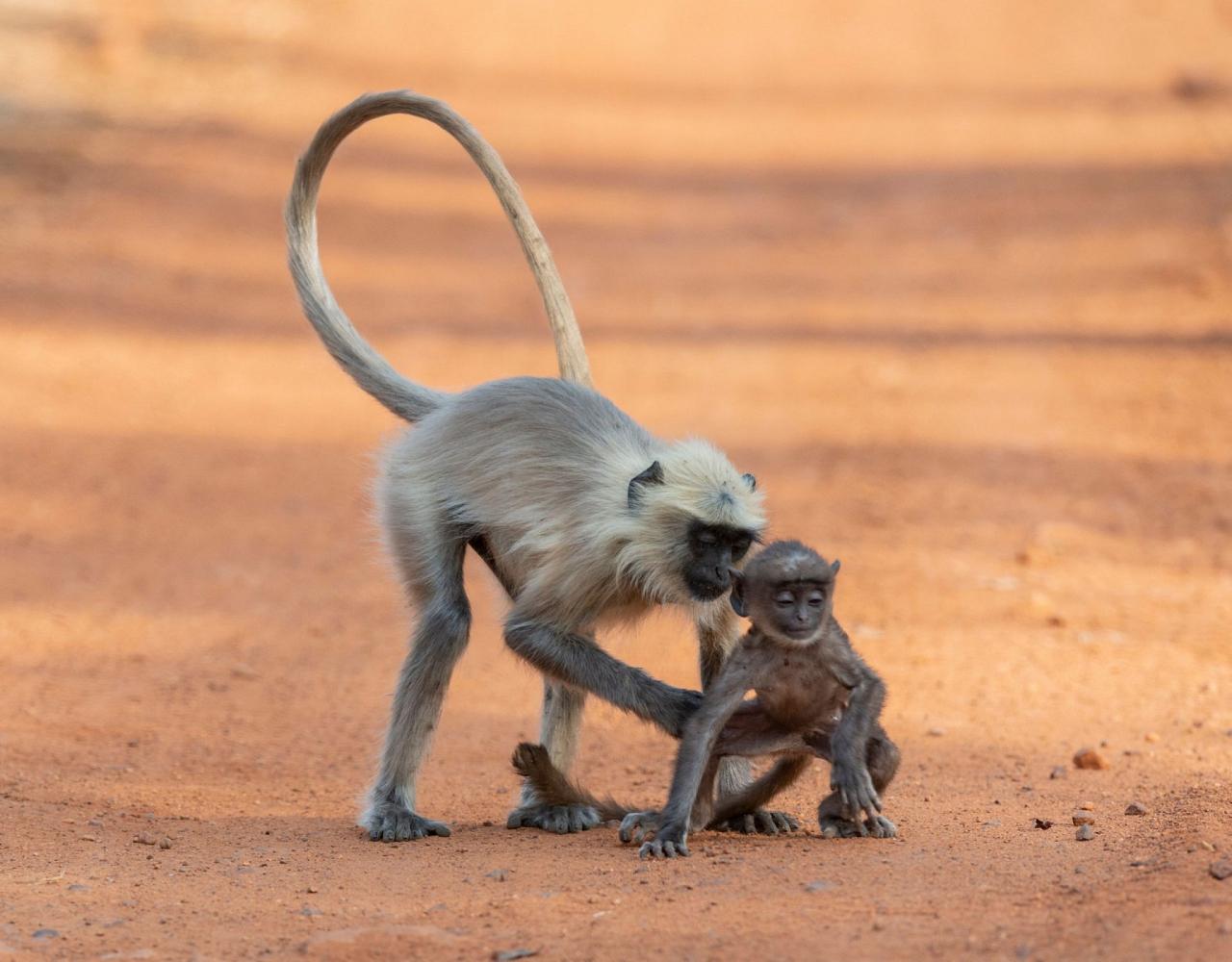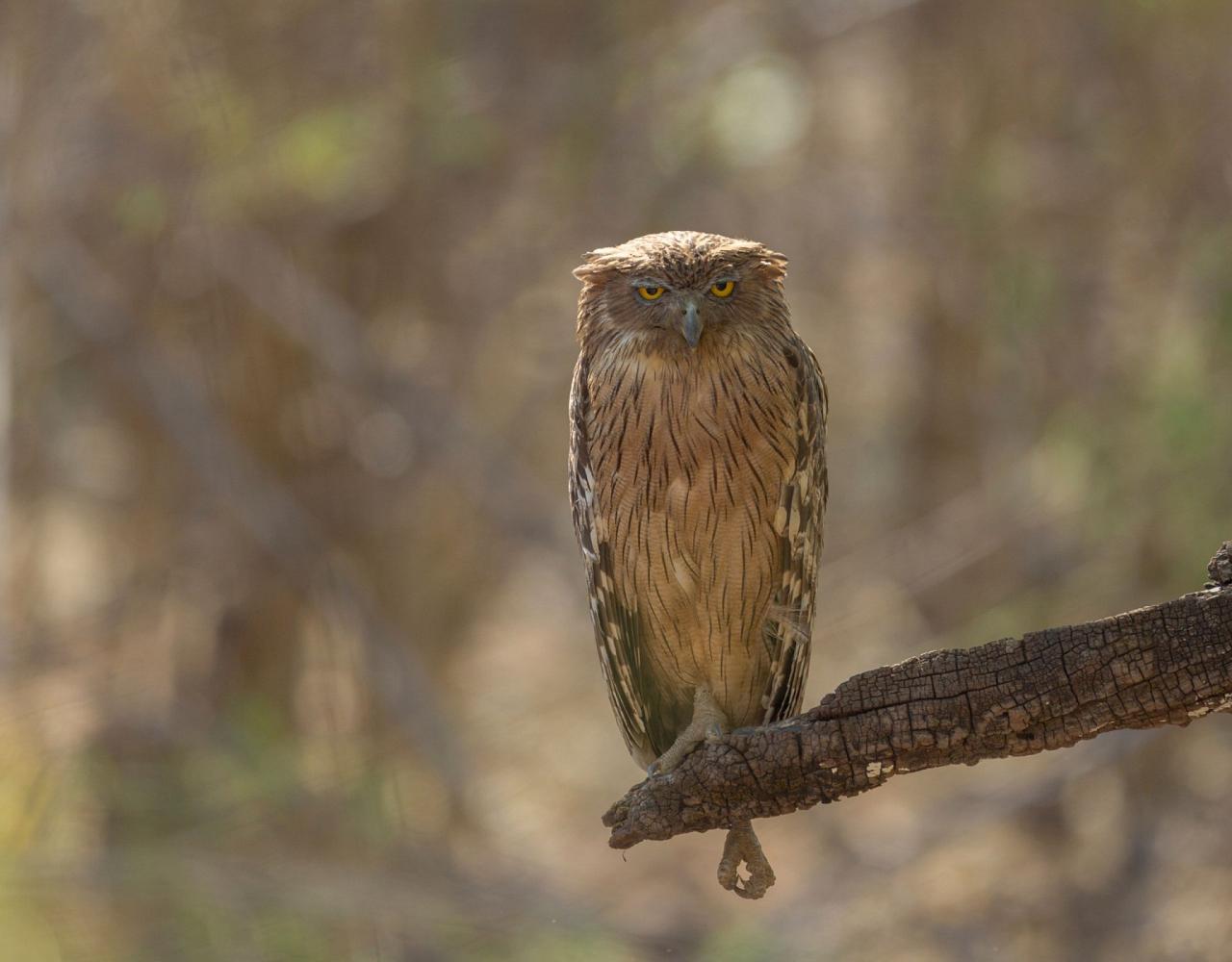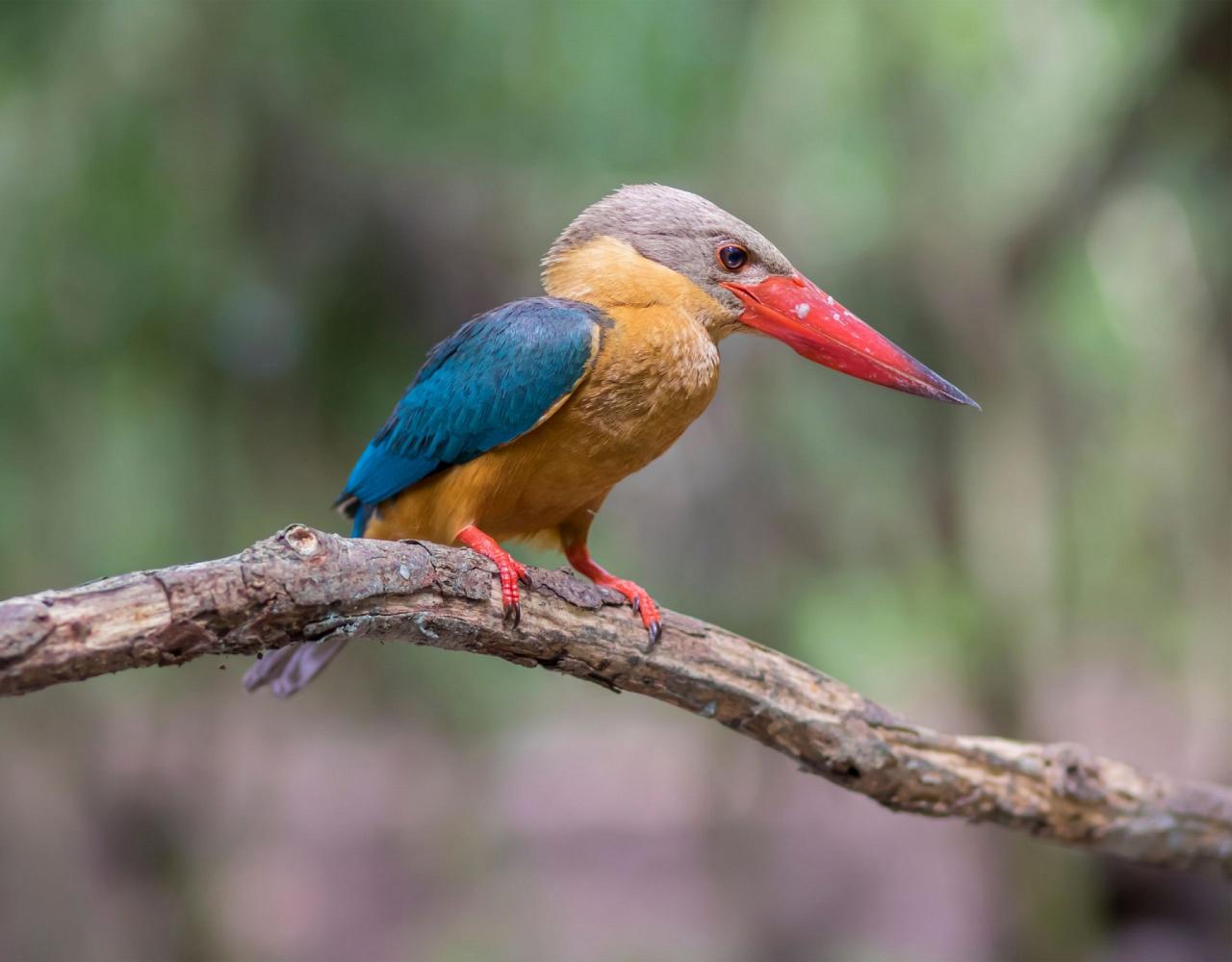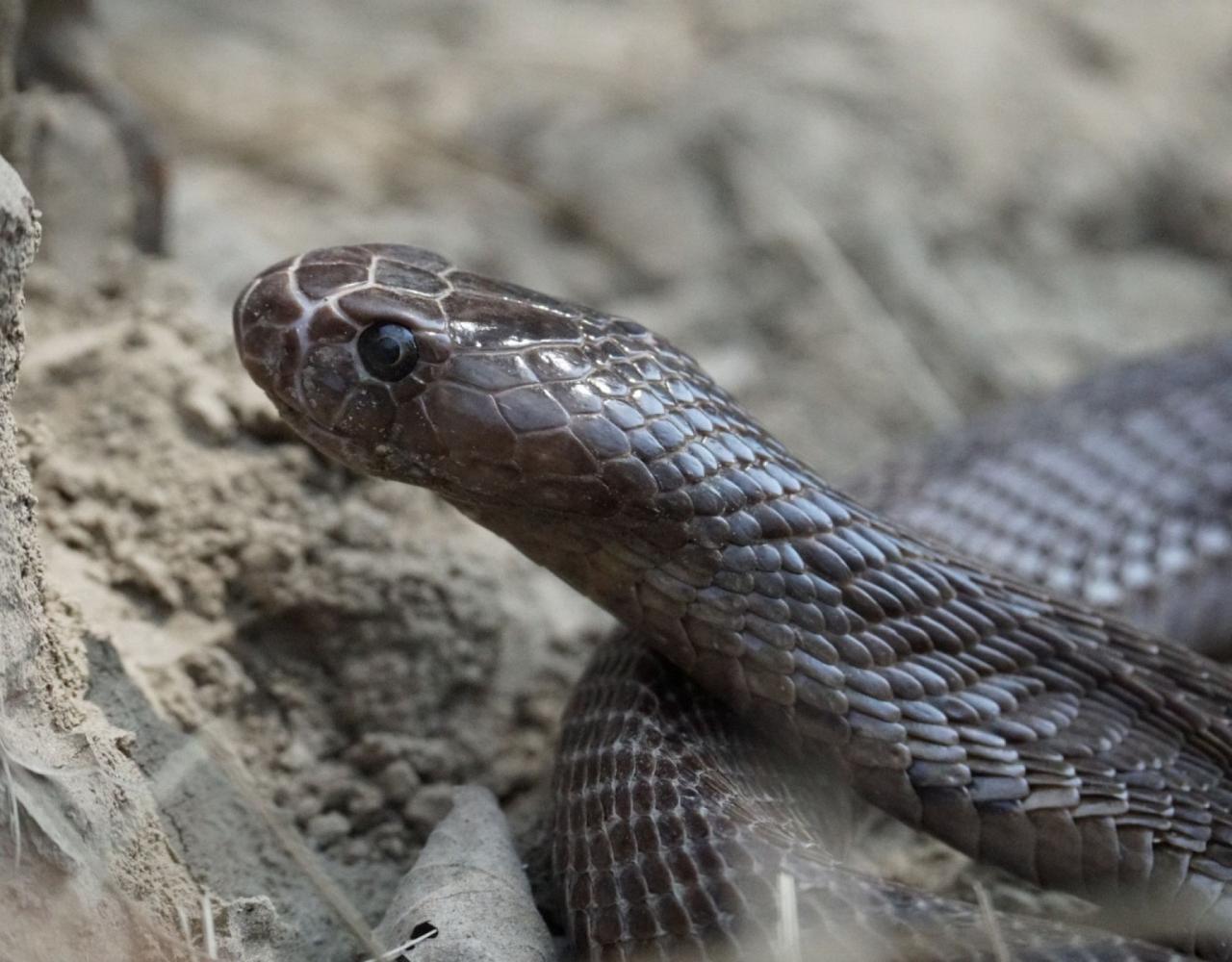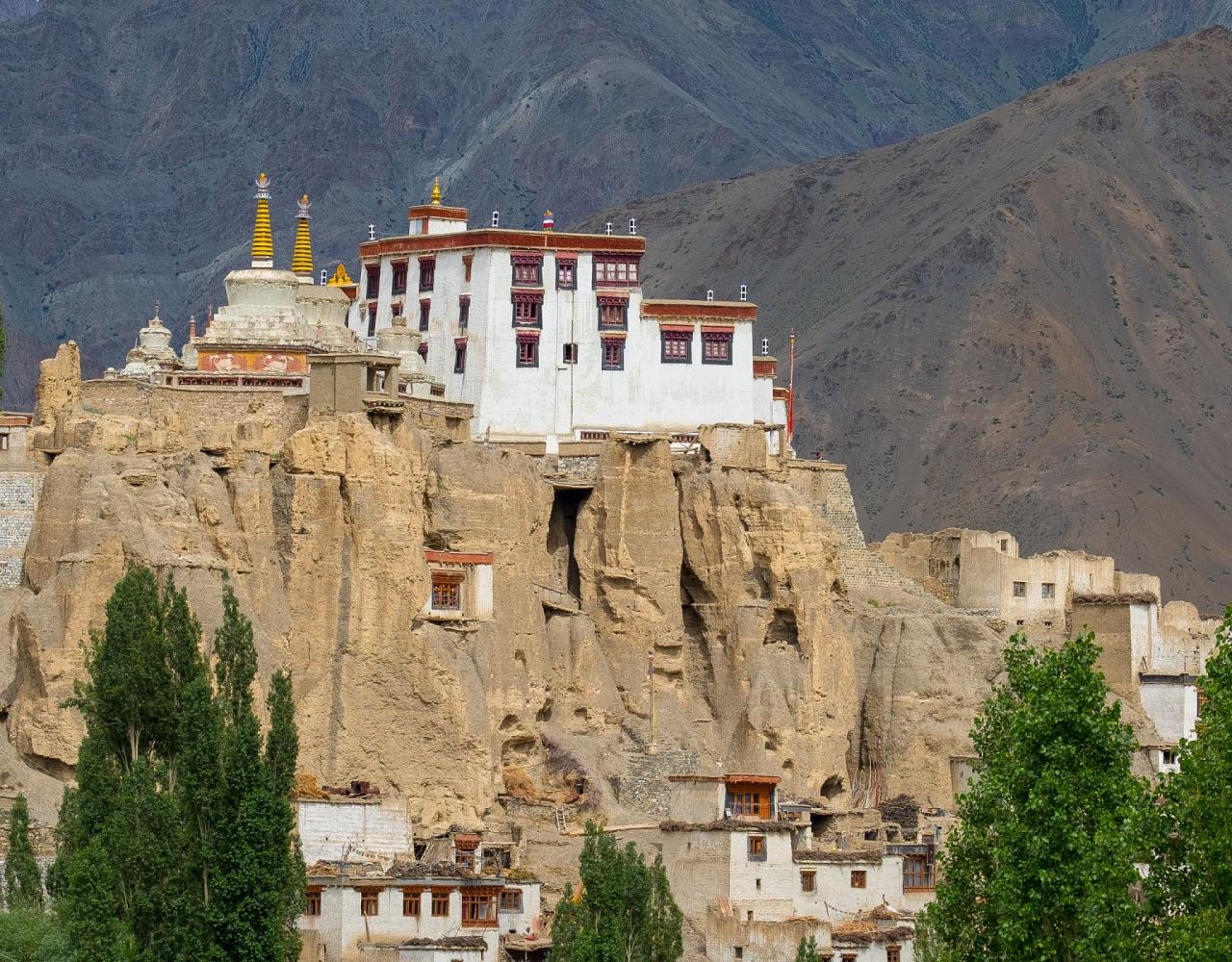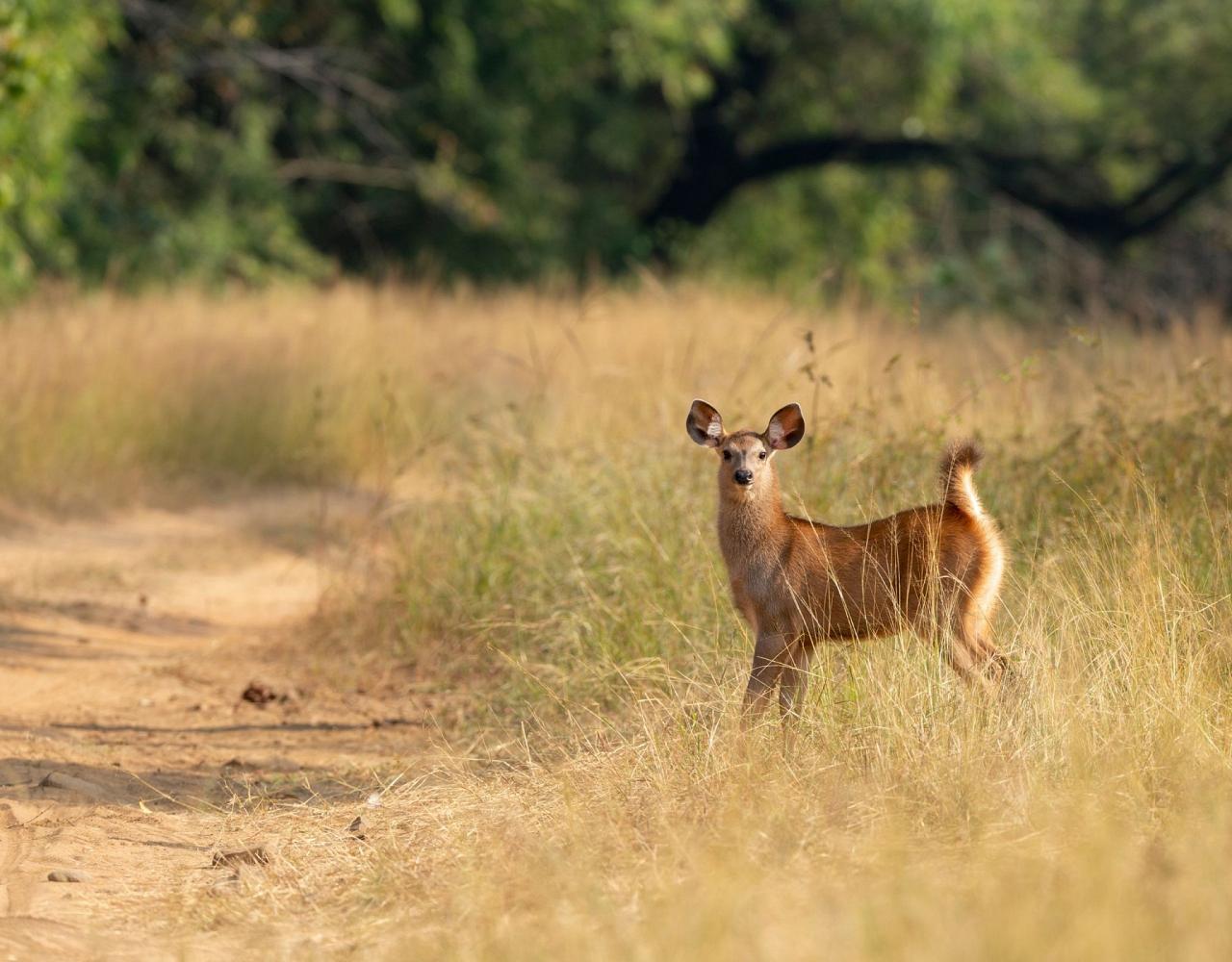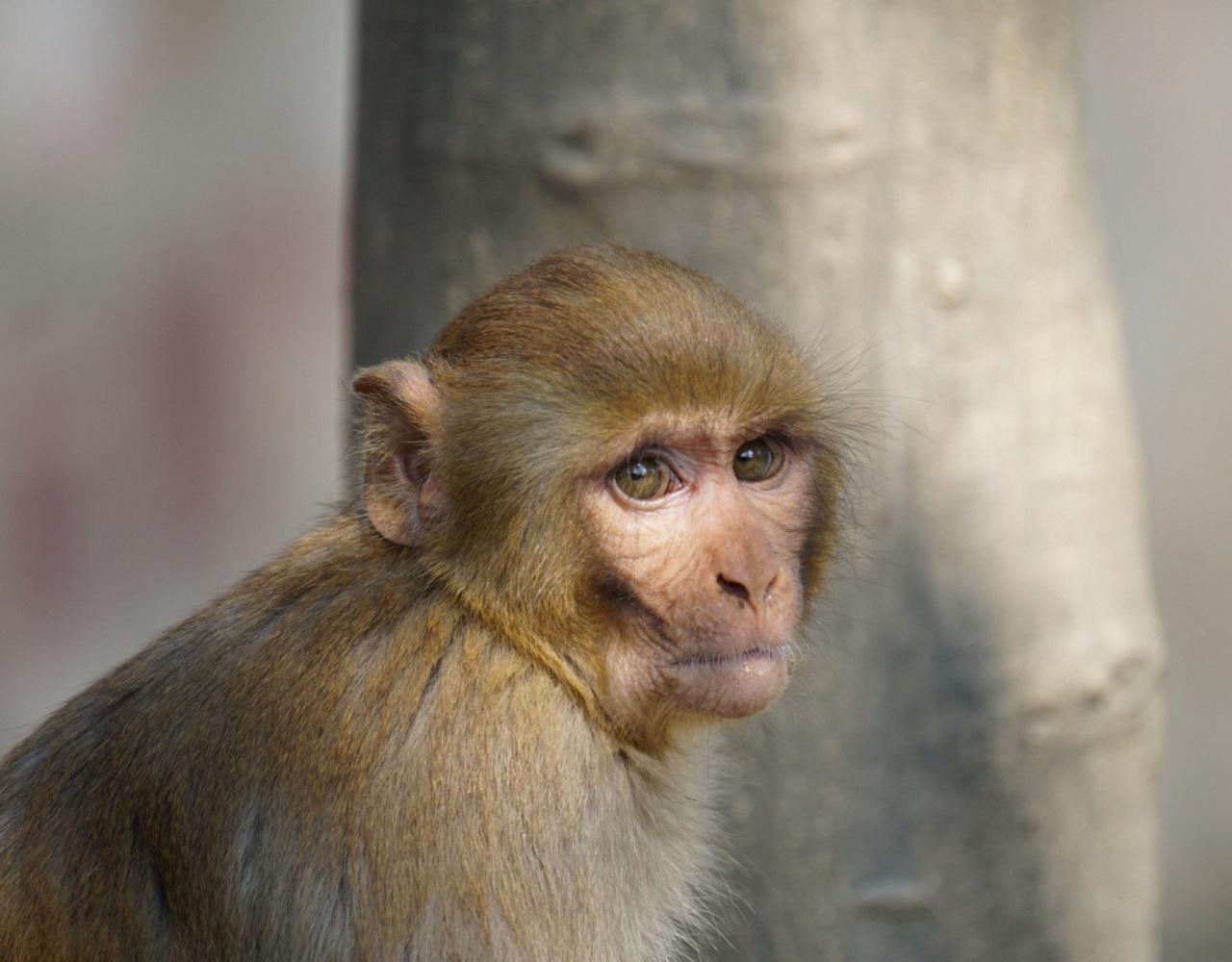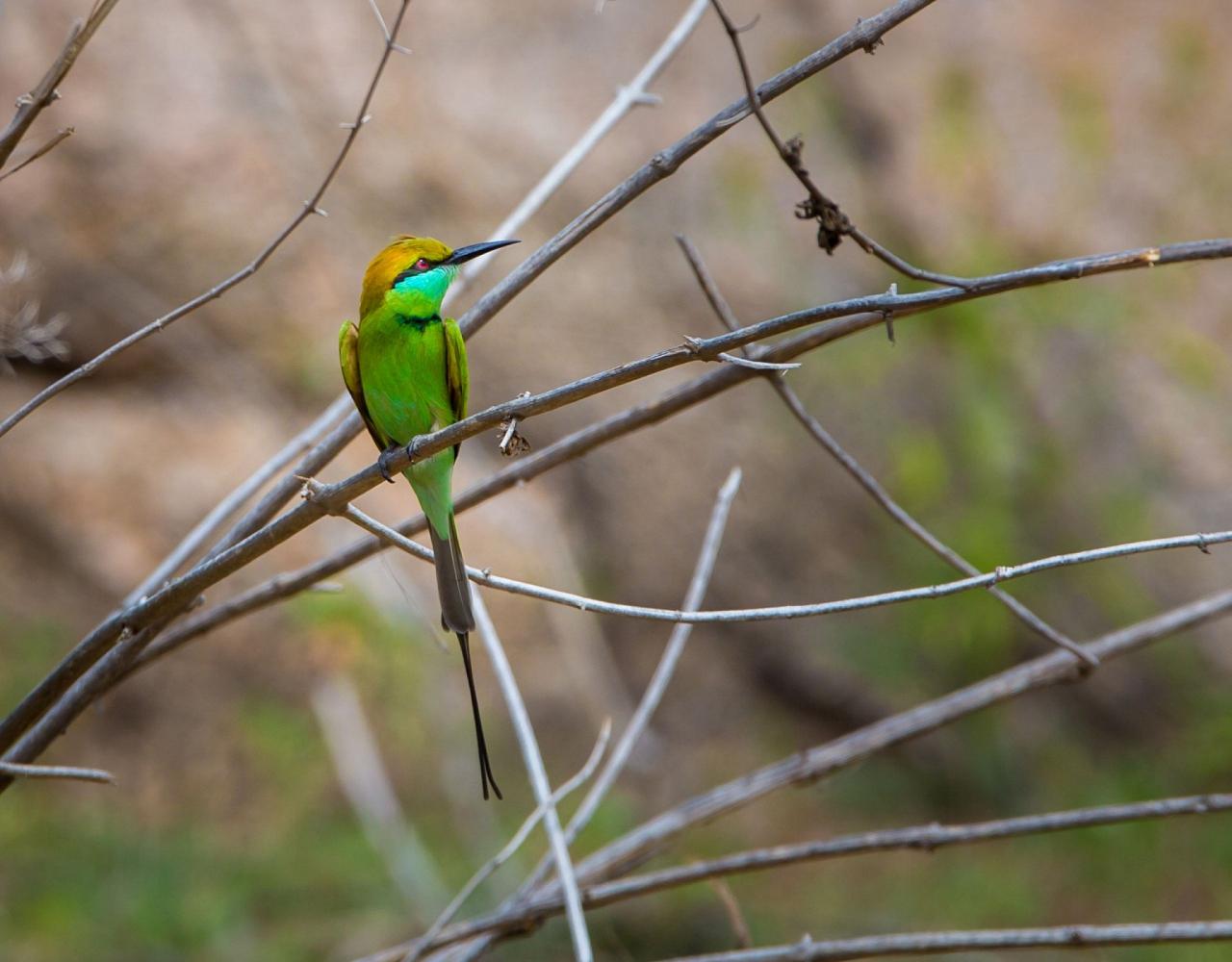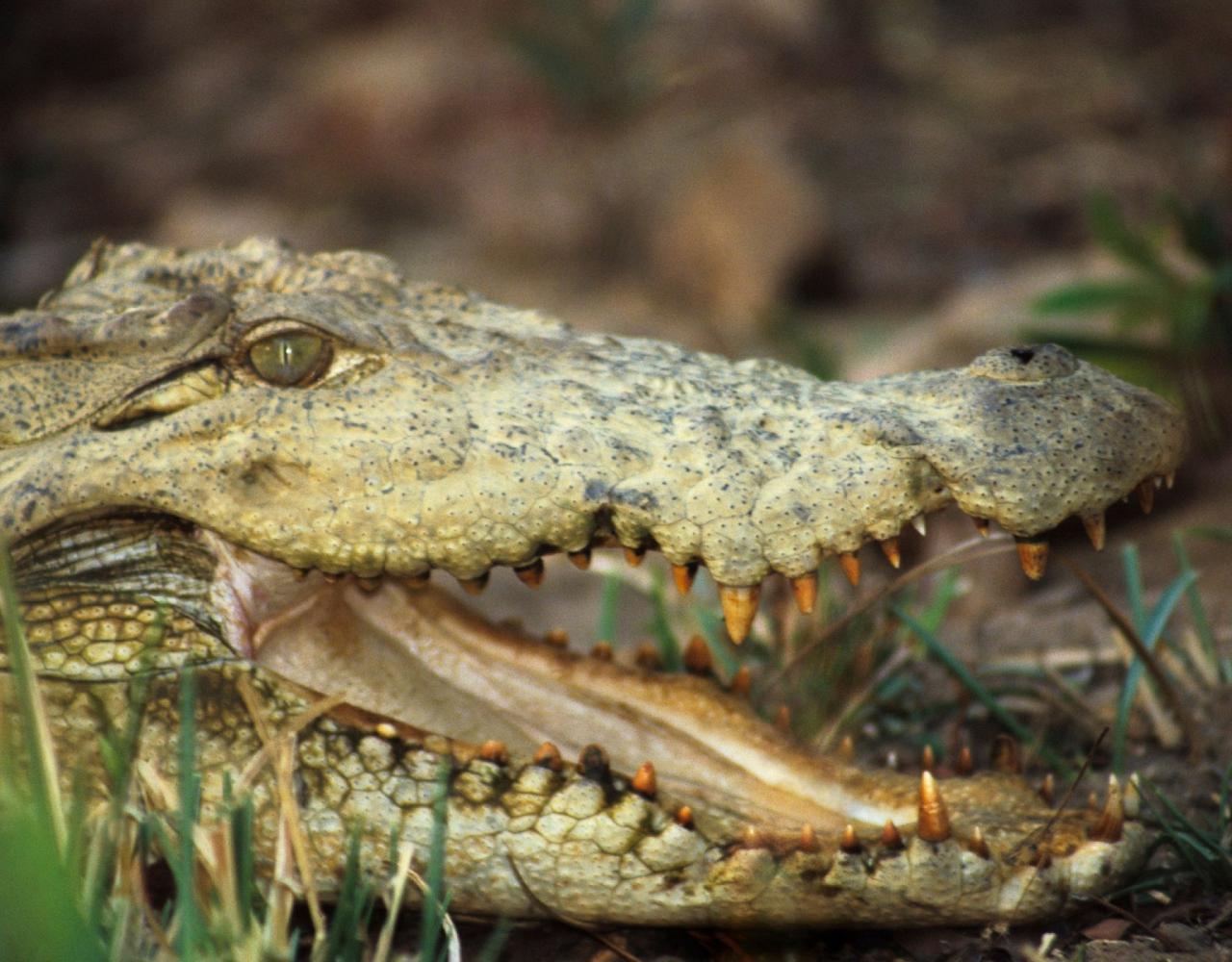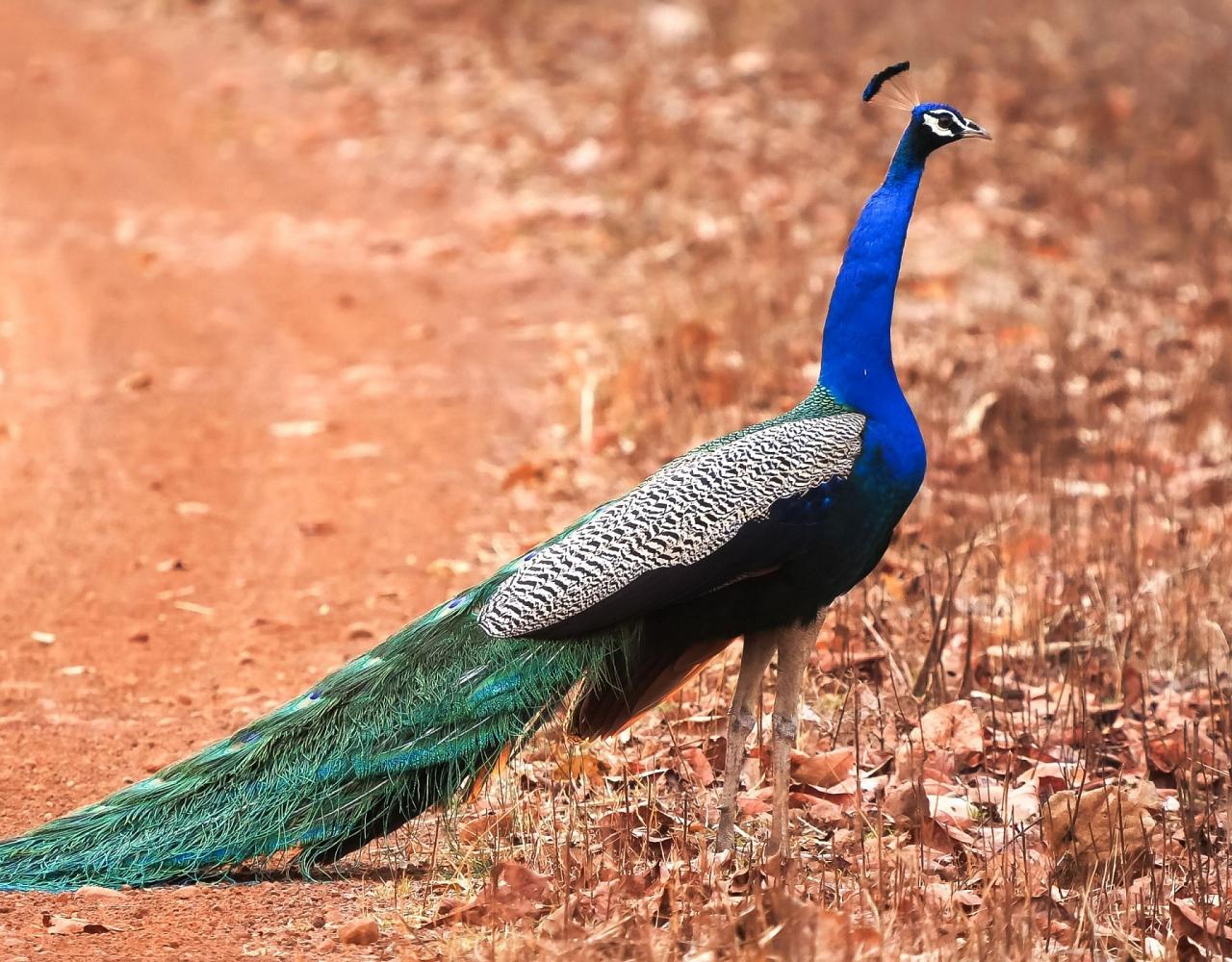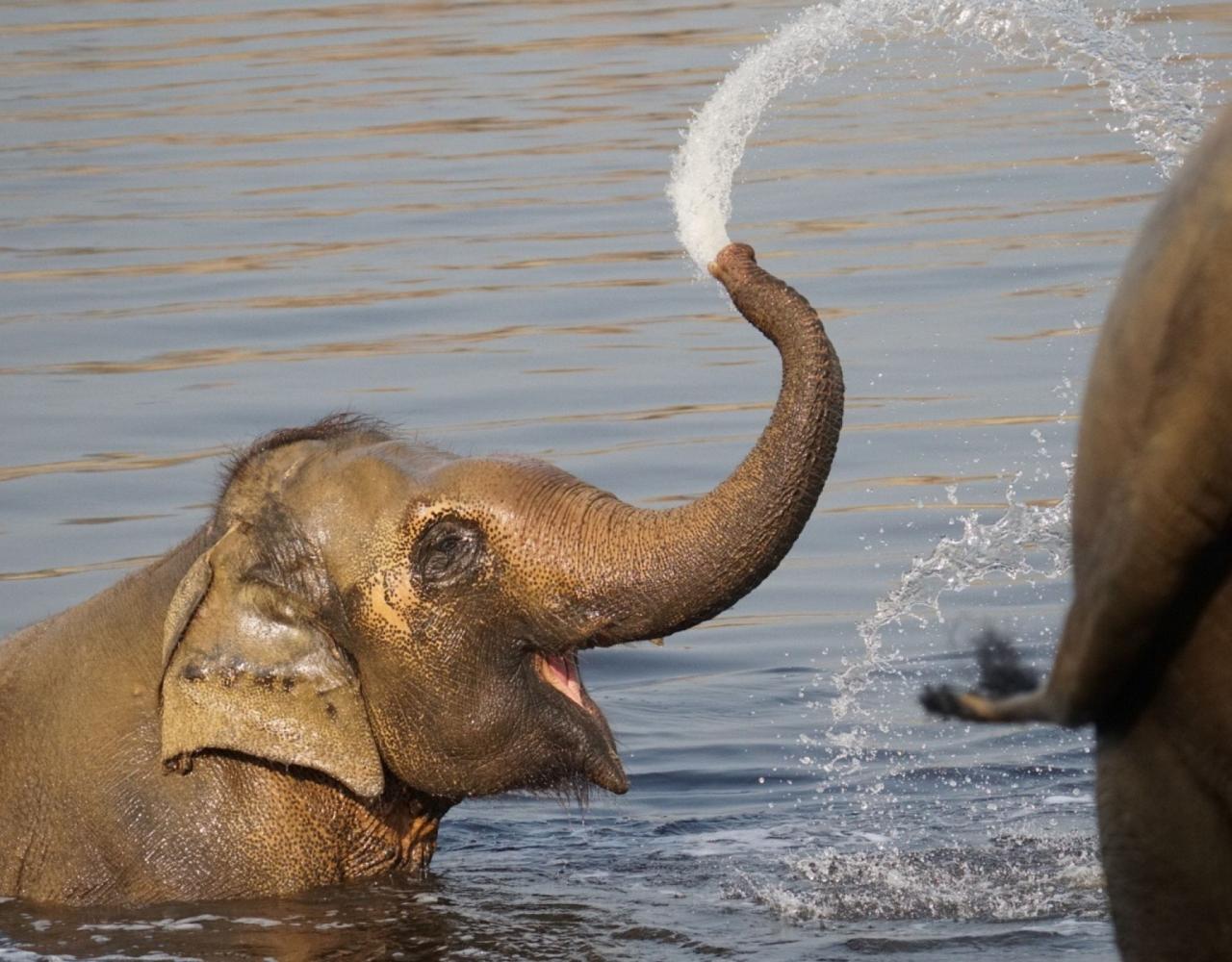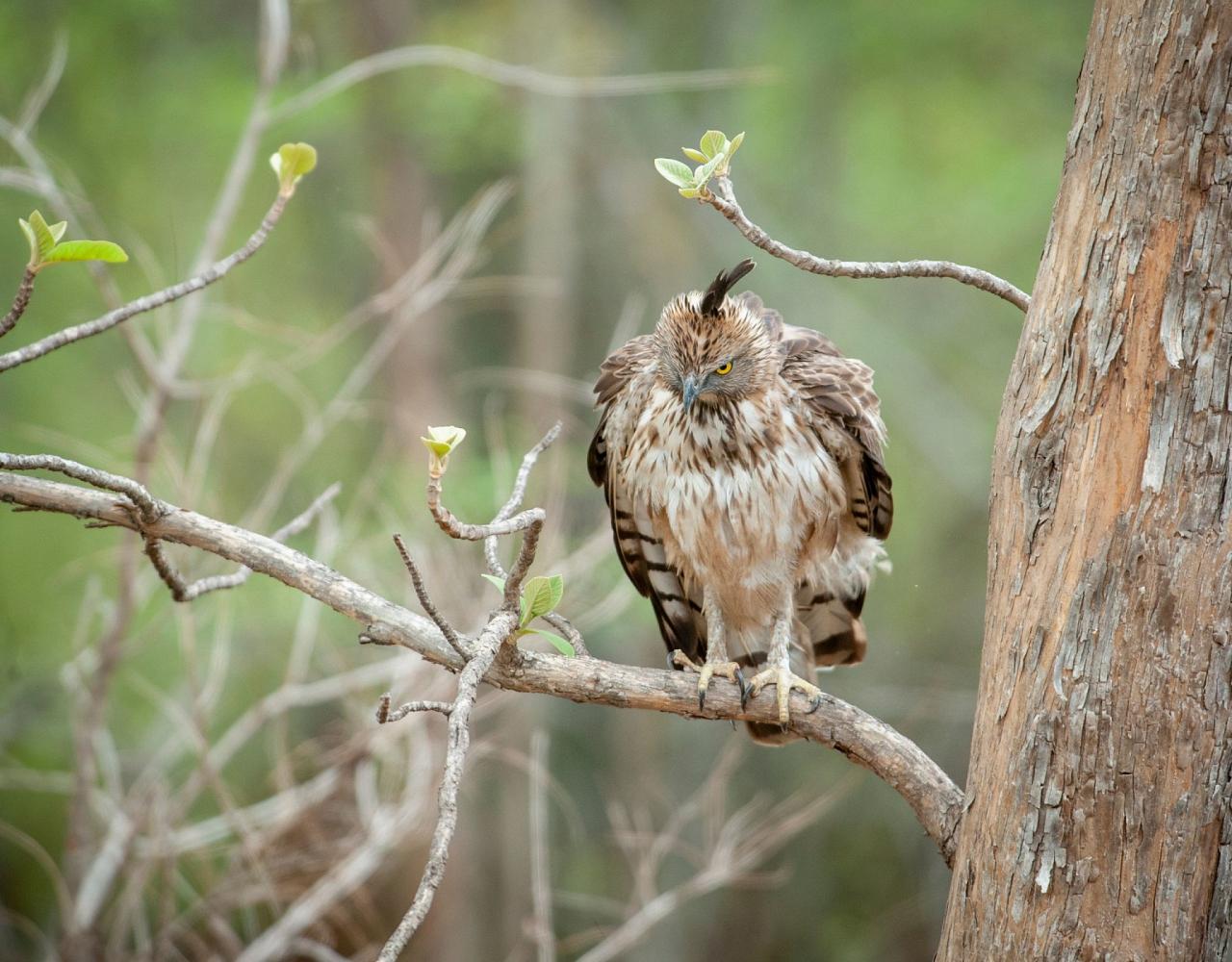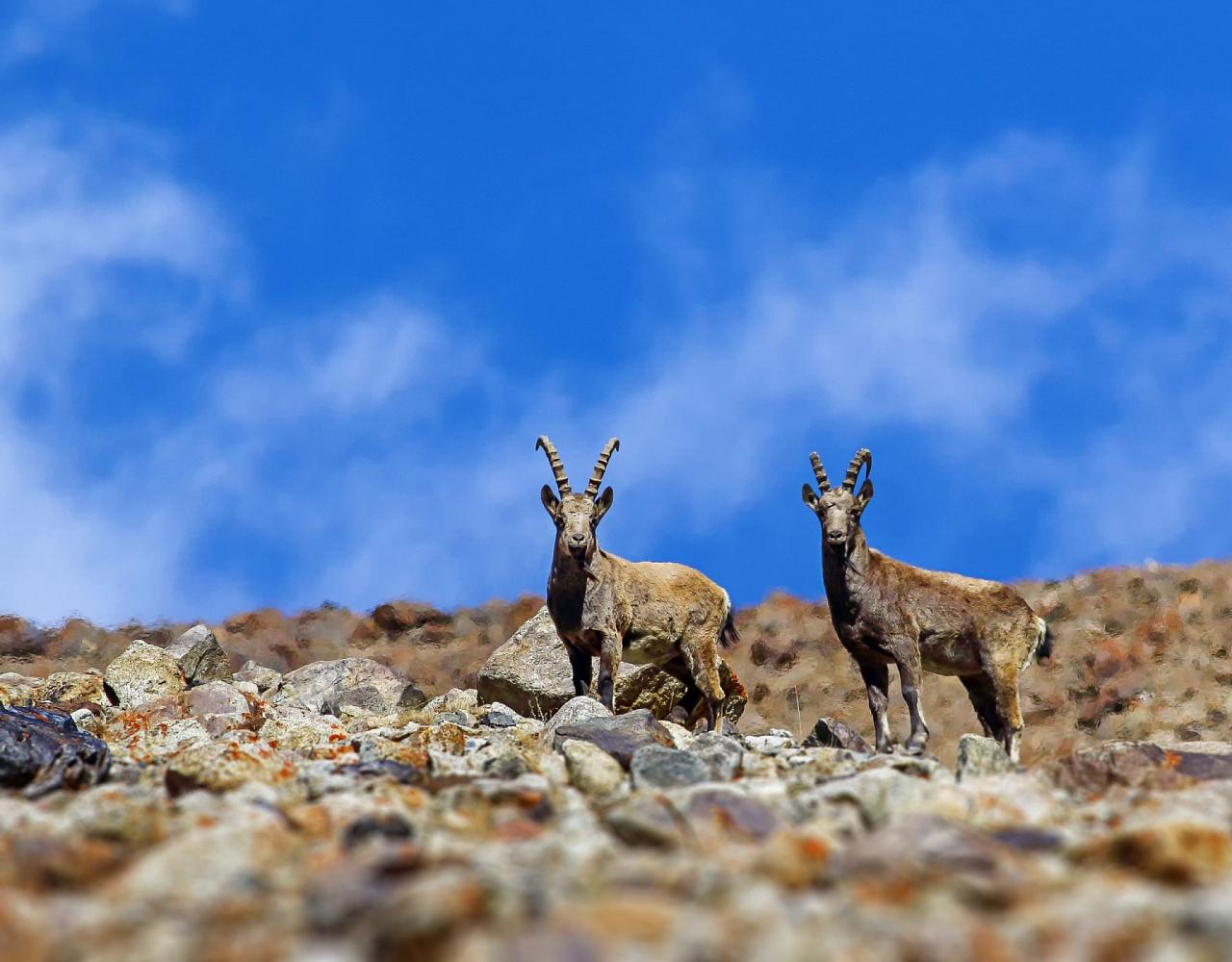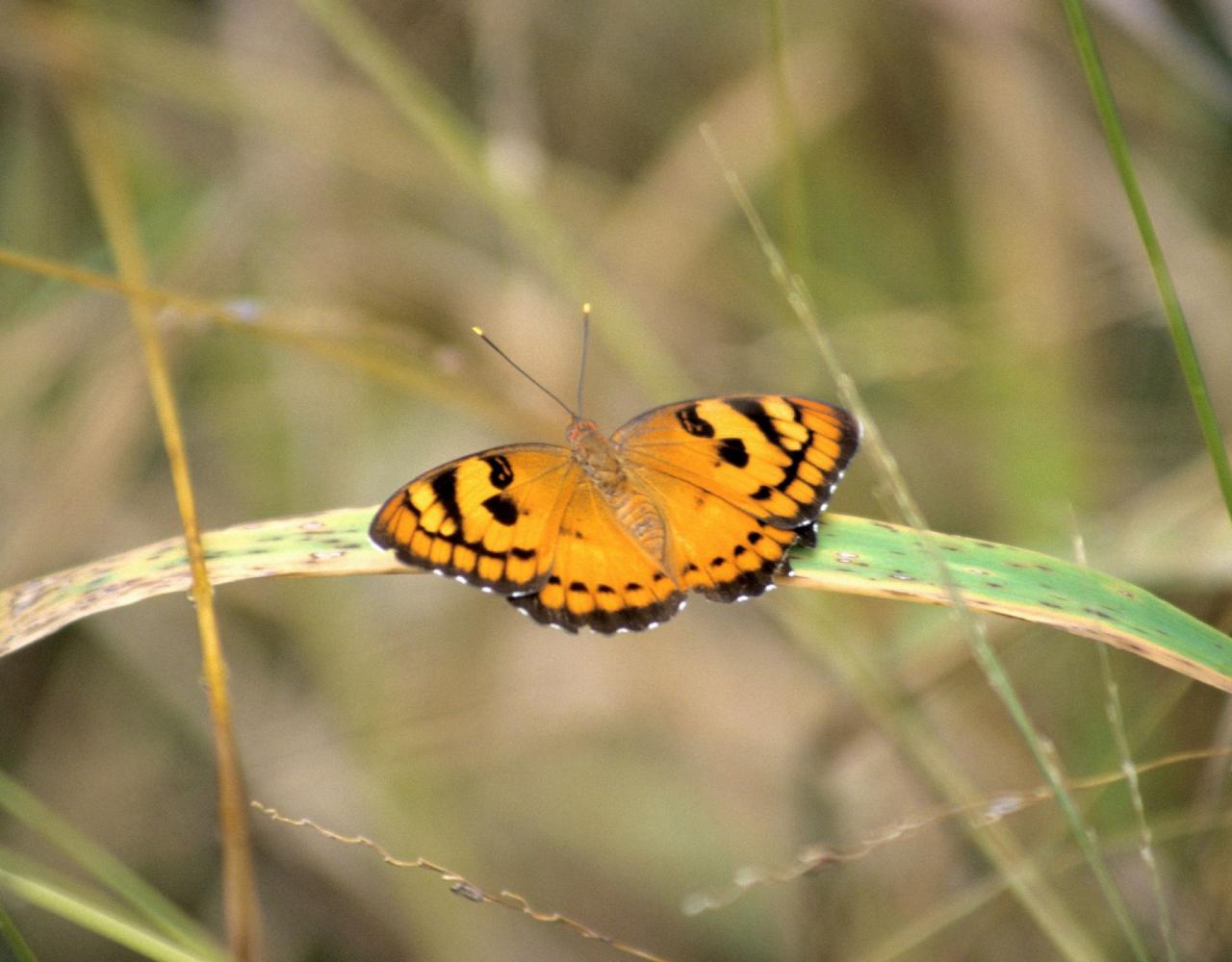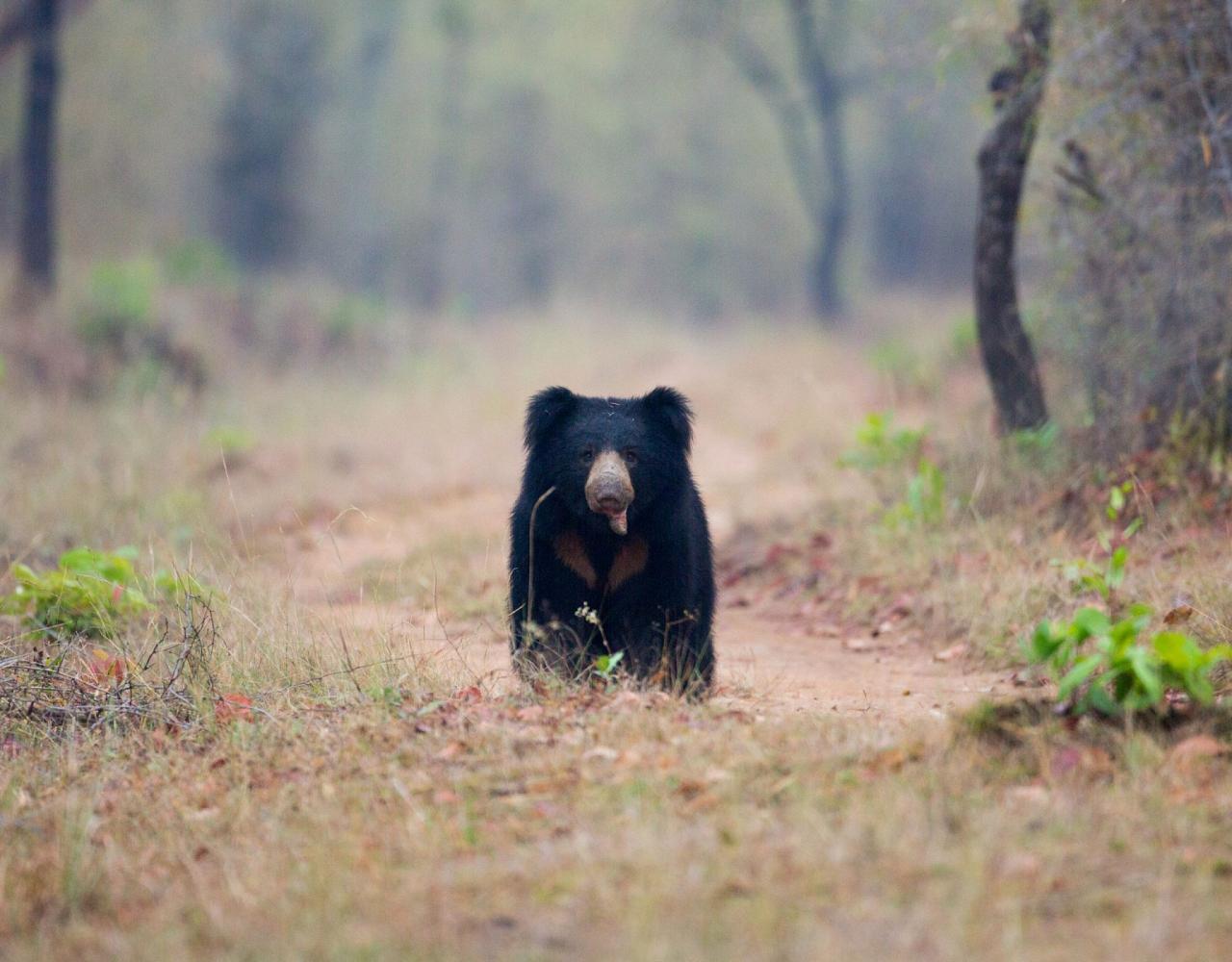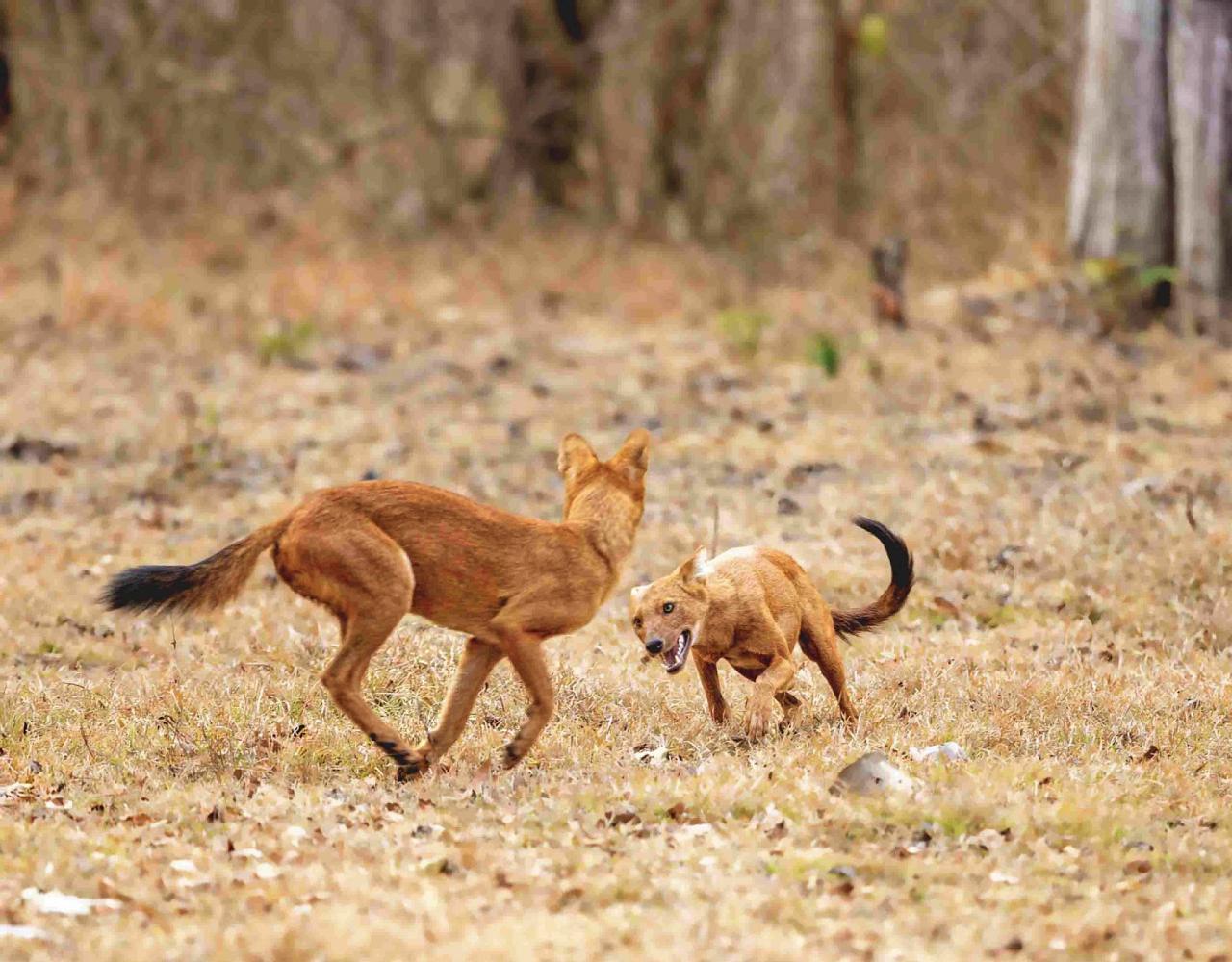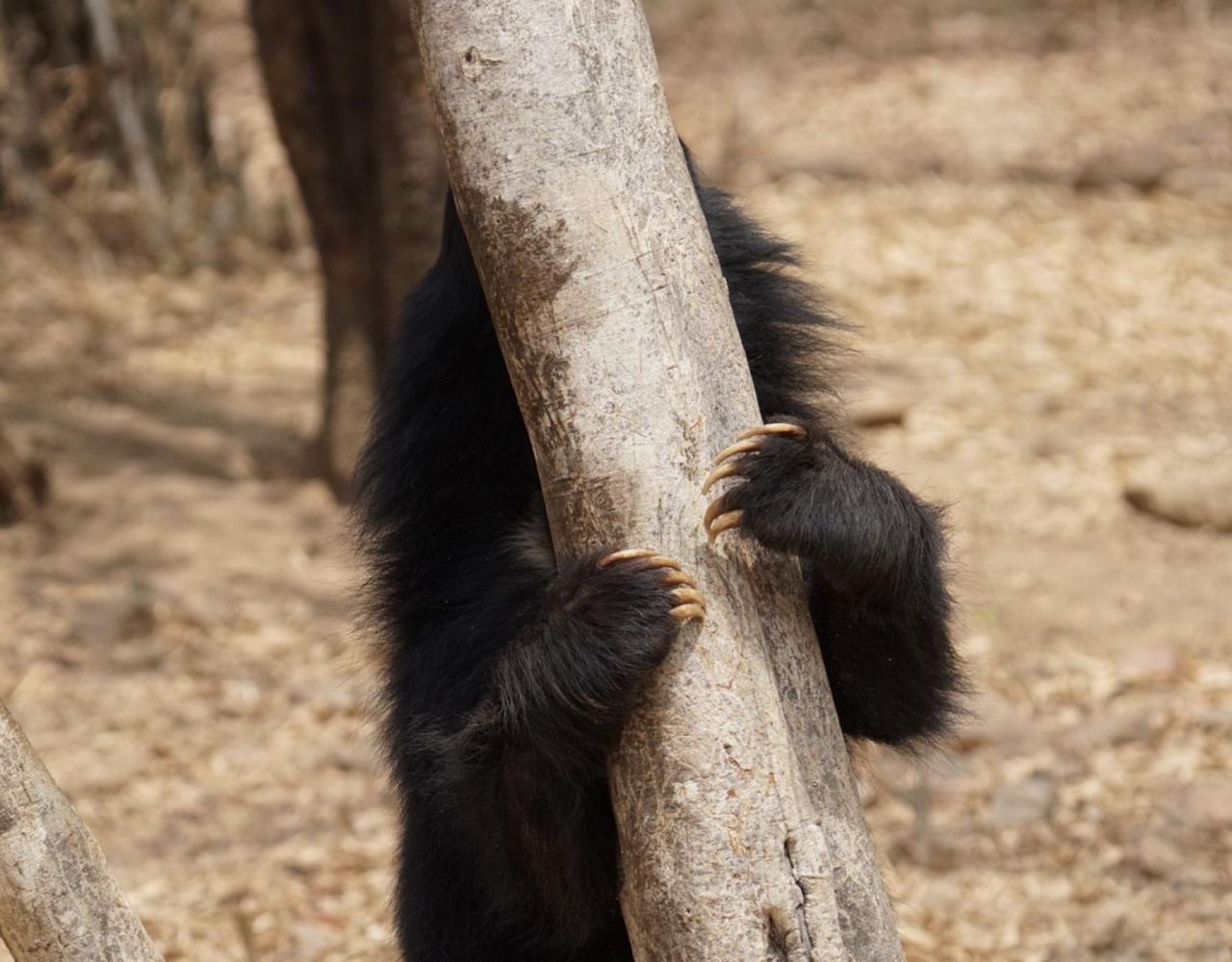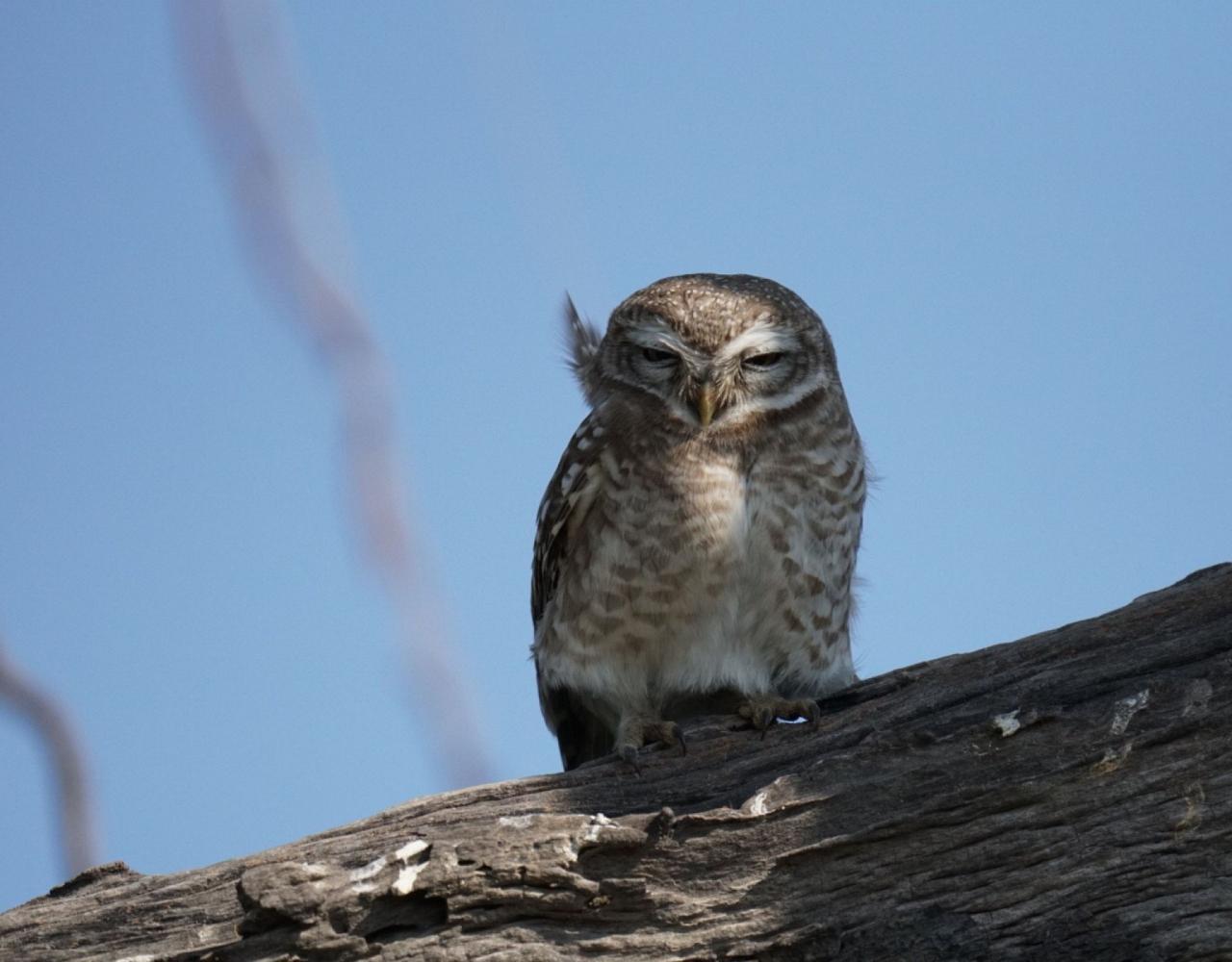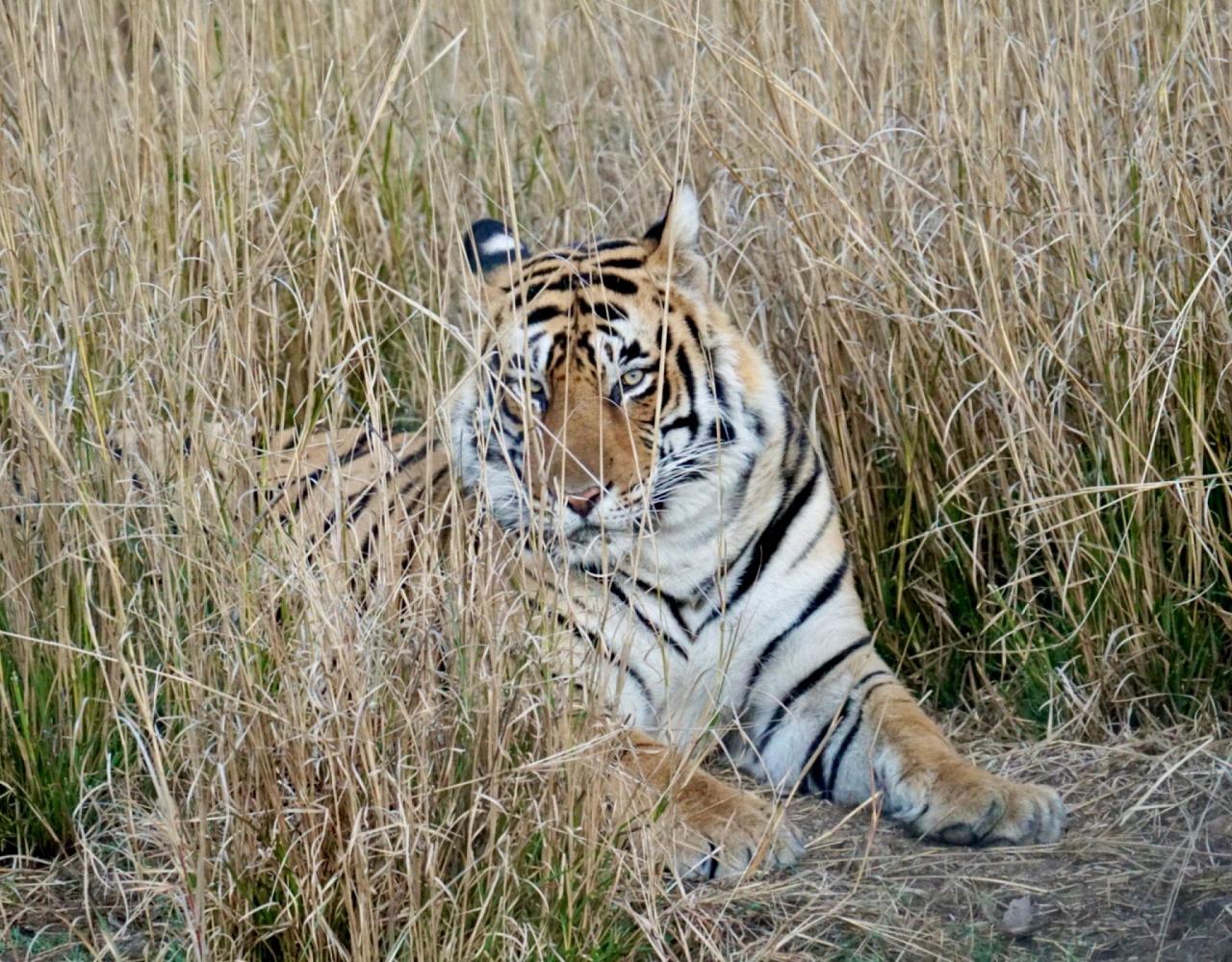India is home to some of the most iconic mammals in existence and 15 of the 37 wild cats found in the world can be located in India. Not to mention incredible bird and reptile life and a number of biodiversity hotspots. It is truly a wildlife enthusiast’s dream. This tour is planned to allow you to explore much of India’s incredible wilderness and rich biodiversity in a short span of time. This is a streamlined tour with a focus on finding Tigers, Snow Leopards, and Leopards in their natural wild habitat, along with a real chance to see the Eurasian Lynx, Jungle Cat, and a number of other wildcats. Other interesting mammals we may see on this trip include Indian Wild Dog or dhole, Sloth Bear, the robust Gaur, Himalayan Wolf, Mountain Weasel, and Ladakh Urial. There are lots of interesting birds too! Malabar Pied Hornbill, Himalayan Vulture, Lammergeier, Golden Eagle, Saker Falcon, Himalayan Snowcock, White-browed Tit-Warbler (a cute little purple puff-ball of a bird), and others are all species we keep an eye out for.
We cover two very different habitats for this tour. We start with a scenic flight from New Delhi, watching the incredible snow-clad Himalayan range below us and landing in Leh (10,500 feet). After the first couple of days of exploring the cultural beauty of Himalayan India, as well as acclimatization and getting used to high altitudes, we head to Hemis National Park, an hour and a half from Leh, where we focus our search on finding Snow Leopards, as well as Eurasian Lynx, Himalayan Wolf, Red Fox, Blue Sheep, Ladakh Urial, and a number of other mammals and birds. After our adventures in Hemis, we drive back to Leh and fly the same day to Nagpur via Delhi. After a three hour drive, we arrive in the Tadoba buffer area where we settle into our comfortable lodge. After camping in Hemis, we enjoy the facilities of the lodge. For the rest of the trip we are out in our open 4x4 jeeps looking for the majestic Bengal Tiger, Common Leopard, Jungle Cat, Rusty-spotted Cat, Indian Wild Dog, Sloth Bear, and a number of ungulates including the largest deer of India, the Sambar Deer, and the much more prolific Spotted Deer. We should find a few endemic birds here including Gray Junglefowl, Indian Scimitar Babbler, Puff-throated Babbler, and Large-gray Babbler, as well as raptors like the Crested Serpent Eagle, and the Changeable Hawk Eagle.
After we experience a few up-close encounters with the tigers and other wildlife of Central India, we fly back to New Delhi from Nagpur and head back home.
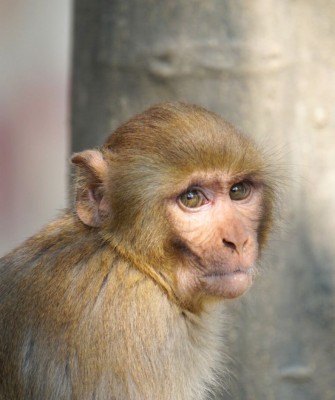
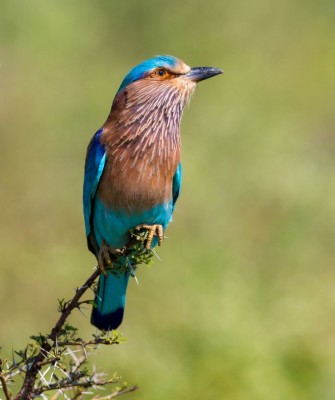
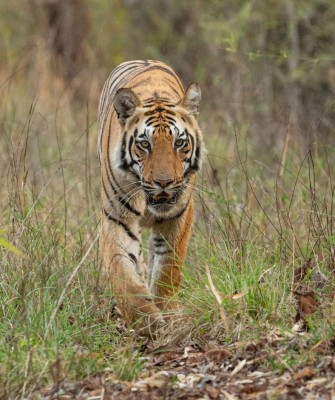
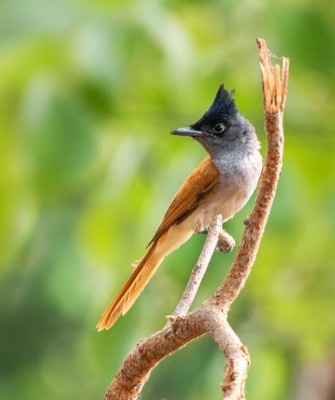
Tour Highlights
- Witness three of the world’s big cats: Bengal Tiger, Common Leopard, and Snow Leopard!
- Watch for three small wild cats: Jungle Cat, Rusty Spotted Cat, and Eurasian Lynx
- Have the possibility of melanistic leopard (black panther!!) and Himalayan Gray Wolf
- See an amazing number of birds, including endemic and regional specialties in four very different parks and ecosystems
- Camp in the middle of the Hemis National Park
- Enjoy incredible views on the Himalayas on our flight from New Delhi to Leh and back (included)
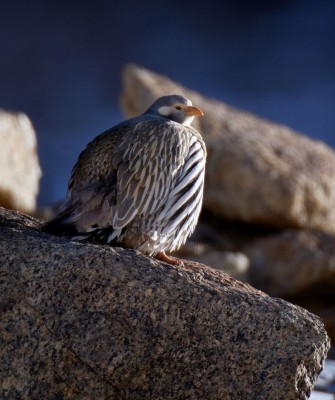
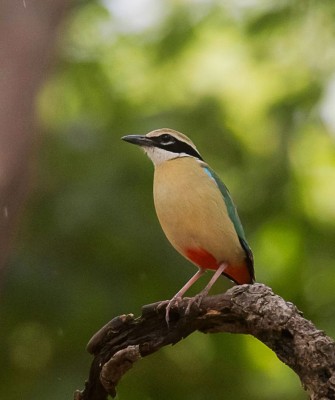

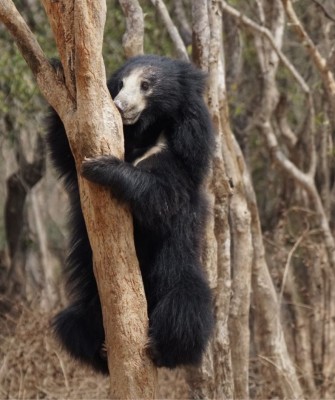
Trip Itinerary
Itineraries are guidelines; variations in itinerary may occur to account for weather, road conditions, closures, etc. and to maximize your experience.
Fri., Feb. 21 Arrivals in New Delhi | Fly to Leh
Welcome to India! New Delhi is the busy and vibrant capital city of India. You might like to arrive early to rest up from travel and see cultural highlights of the city; if so we can help you with plans and ideas to explore. If you arrive today, you are driven to the domestic airport and continue on a flight to Leh. In Leh you are met by the crew and then driven to the hotel. We have no activities planned today. The plan is to rest and acclimatize at our hotel.
Accommodations at Rewa Ladakh (D)
Sat., Feb. 22 Leh
Today is more of a relaxing day to acclimate to the altitude and ensure we are hydrating and getting some rest. In the morning, we visit the Thiksey Monastery, situated on a hilltop just outside the city of Leh. It is often referred to as the ‘Little Potala Palace’ due to its resemblance of the iconic monastery in Tibet.
This afternoon we do a bit of birding near the Indus River. Birds in this area include Himalayan Buzzard, Eurasian Goshawk, Himalayan Griffon, Ibisbill, Cinereous Tit, and White-winged Redstart. If we’re lucky we may see our first mammals—Red Fox and Woolly Hare.
Accommodations at Rewa Ladakh (B,L,D)
Sun., Feb. 23 Leh | Hemis National Park
After a quick breakfast at the lodge we drive to our base at an elevation of 13,000 feet. We leave early since we want to be there when the spotters are still out looking for Snow Leopards. We reach Hemis and start looking for the Snow Leopard and other wildlife almost immediately. If the spotters have already found a leopard perched on the ridge, we join them immediately in the field. After a few hours in the field, we have lunch and a bit of a rest before resuming our search with the spotters. If conditions are cold, we return early and snuggle into our tents with comfortable sleeping bags. Dinner is served shortly and we sleep comfortably in our tents.
Accommodations in tents with sleeping bags (B,L,D)
Mon., Feb. 24 – Wed., Feb. 26 Hemis National Park
We start our days early—normally the spotters are out earlier and they inform us of any sightings. You get moving on knowing about the spotting and walk to the nearest point from where you may need to hike up a bit or just use the scopes to look at the cat. Once the cats are sure of their advantage in the wild—be it the distance from the viewer or a prey that they are looking at—they normally relax and allow great views through the scope. Mid-day we enjoy lunch with local delicacies. After lunch we’re out again looking for the cats and other mammals and birds. Blue Sheep are normally sighted well and their behavior in the wild gives us some indications about the movement of the Snow Leopard and wolves. We also look for the smaller mammals like the Royle’s and Large-eared Pika, Wolly Hare, and interesting birds like the Red-fronted Serin, Horned Lark, Golden Eagle, Lammergeier, Himalayan Vulture, the rare White-browed Tit-Warbler, and other wildlife.
This is our pattern each day. Breakfast is served around 7:00 AM in the dining tent followed by explorations until about noon. Then, take a break for lunch either at the campsite or in the field. After that we’re out until dinner time around 5:30 or 6:00 PM. The main aim is to find the Snow Leopards, but we also look and discuss the incredible geology, in particular, the rock formations. Plants are of interest too, including Seabuckthron bushes which are edible to humans and other species.
Accommodations in tents with sleeping bags (B,L,D)
Thurs., Feb. 27 Flight to New Delhi | Nagpur | Tadoba Tiger Reserve
Today is a travel day. Early this morning we drive back to the Leh airport in time for the flight to New Delhi, where we connect on a flight to Nagpur. From there, it’s a three hour drive to our lodge in Tadoba.
Settle into comfortable, air-conditioned rooms, and gather for dinner after time to freshen up.
Accomodations at The Tadoba Jungle Camp (B,L,D)
Fri., Feb. 28 & Sat., Mar. 1 Two Full Days in Tadoba Tiger Reserve | Safari Drives
Enjoy early morning and afternoon safaris in open 4x4 jeeps. The park is about 1,700 sq kms and it is divided in four zones that are open to tourists.
The park is home to Tigers, Indian Leopards, the rare and severely endangered Indian Wild Dog, Asiatic Jackal, Jungle Cat, Sloth Bear, the endemic Sambar, the largest wild bovid—Indian Gaur, Bengal Fox, herds of Spotted Deer, Wild Boar, and other mammals. Tadoba Tiger Reserve hosts mixed forest habitat with teak trees and natural forest interspersed with natural lakes. It is also home to over 275 species of birds like the Crested Hawk Eagle, Crested Serpent Eagle, Mottled Wood Owl, Scarlet Minivet, Brown-cheeked Fulvetta, Paradise Flycatcher, Red Spurfowl, Greater Racket-tailed Drongo, endemic Indian Scimitar Babbler, Gray Junglefowl, and more.
Your simple but well-appointed lodge is located near to the reserve with a number of brightly colored birds on the grounds. The rooms are spacious and air conditioned and the lodge has a pool, a welcome amenity in this hot climate. Within the lodge grounds we can see a number of birds (which keep us busy over lunch). The lodge employs and engages with the local community with active participation from the manager and the naturalists. Tadoba Jungle Camp has running hot water, laundry facilities, and for those who need to get in touch with their family and friends there is an area that is equipped with wifi. Cuisine at the camp is a mix of Indian and continental cuisine (and can manage special dietary needs for those who need it). We gather for meals in a nice dining area adorned with local art and furnishings. A fireplace is lit up in the evenings and everyone gathers around to share conversation and learn from each other over tea and drinks.
Accommodations at The Tadoba Jungle Camp (B,L,D)
Sun., Mar. 2 Tadoba Tiger Reserve | Nagpur | New Delhi | Departures
After the final safari in Tadoba this morning with lunch at the lodge, we drive to Nagpur to connect with flights to New Delhi. On arrival in New Delhi, if needed you are driven to the international airport to connect to your flight back home.
Please do book a flight back home ensuring that you have a 4 hour gap from the arrival time at New Delhi – this is to ensure that you do not miss or have to rush to get to your flight back home. (B,L)
Cost of the Journey
The cost of this journey is per person, based on occupancy,$5590 DBL / $6370 SGL. This cost includes Internal flights; all accommodations; all meals as stated in the itinerary; group airport transfers; ground transportation; professional guide services; park, preserve, and other activity fees; miscellaneous program expenses; and internal airfare.
Tour price does not include: roundtrip airfare to and from New Delhi or items of a personal nature such as laundry, porterage, telephone charges, or alcoholic beverages.
Travel Details
Please plan to make air travel plans only after the minimum group size has been met. We will send you a confirmation email as soon as the trip has been confirmed.
Arrival and Departure Airport: Indira Gandhi International Airport (DEL) in Delhi, India
Arrival Details: Plan to arrive February 21, 2025, no later than 3:00 AM. We have an early domestic flight on the arrival day.
Departure Details: Plan flight departures on March 3, 2025, after 12:20 AM. We have a domestic flight that lands at DEL at 8:20 PM on March 2.
Travel Tips: You may want to arrive on February 20 since the domestic flight on February 21 is so early. A couple of hotel recommendations near the airport are: The Royal Inn IGI, which is about $30/night or the the Holiday Inn Delhi Airport for about $160/night.
Getting There: Naturalist Journeys offers you the service of our travel agent, Pam Davis or Becki Holt of Willamette Travel, to help you book your international flights.
Entry Requirements: See "Essential Information" section under the "Know Before You Go” tab.
Items of Note
The main tour demands a fair amount of time in the open jeeps through the forests, which can be bumpy and dusty but allow for prime wildlife viewing. Due to predators being present, there is minimal walking so other than jeep-driving type of conditions, it is a fairly easy trip.
In Ladakh – we will be walking in cold weather at an attitude of 10500 feet – 13000 feet (approximately). Our walks are mostly for 1 – 4 hours – of course you are not going to be walking all of this time – but you will be out in the cold and walk from time to time. Participants should check with their doctor prior to the tour to discuss medication such as Diamox for high altitudes.
The pace of the tour is pretty relaxed, but the safaris require early morning starts and normally the evening meals are done by 8:00 PM so you can get enough sleep each night. In Ladakh – we will allow as much acclimatization as possible to ensure that everyone is able to enjoy the trip.
In Ladakh – if someone is not feeling well – s/he must inform that to the tour leader immediately. Since the team will need to ensure the safety of everyone – hence this is a pre-requirement for a compact tour like this to succeed. Our team will have oxygen cylinder and it will be provided to the person who needs it but if there is a delay in the team getting to know about the problem – the resulting complications will jeopardize the success of the tour for everyone.
Browse below for trip reports and species lists from past versions of this and other tours from this destination.
India
- January 2006
- March 2012
- January 2020
- November 2023
- November 2024
- February 2025 (Big Cats)
Essential Information +
Pace & Protocols +
Packing List +
Suggested Reading List +
Useful Links +
Photo credits: Banners: Bengal Tiger, Collared Scops Owl, Lammergeier, Leopard (Rajiv Gandhi via Creative Commons), Greater Racket-tailed Drongo, Sloth Bear, India Paradise Flycatcher (Kunalchak14 via Creative Commons) Thumbnails: Indian Roller, Bengal Tiger, India Paradise Flycatcher, Gray Junglefowl, Himalayan Snowcock, Butterfly, Indian Pitta, Rusty-spotted Cat








